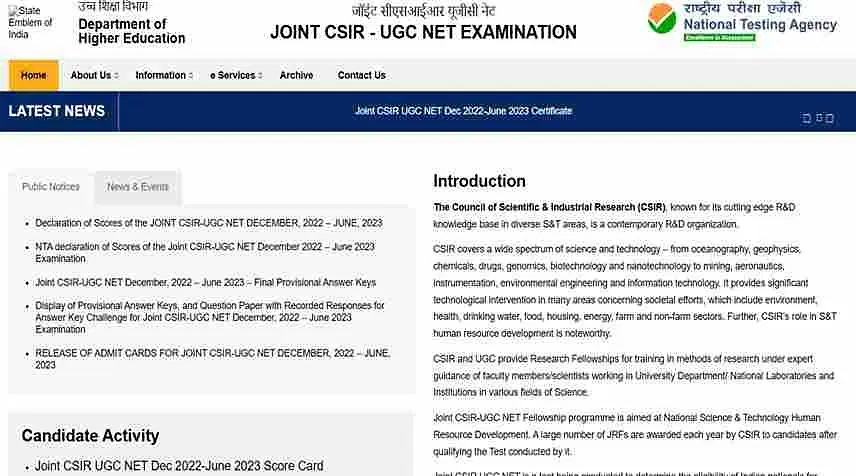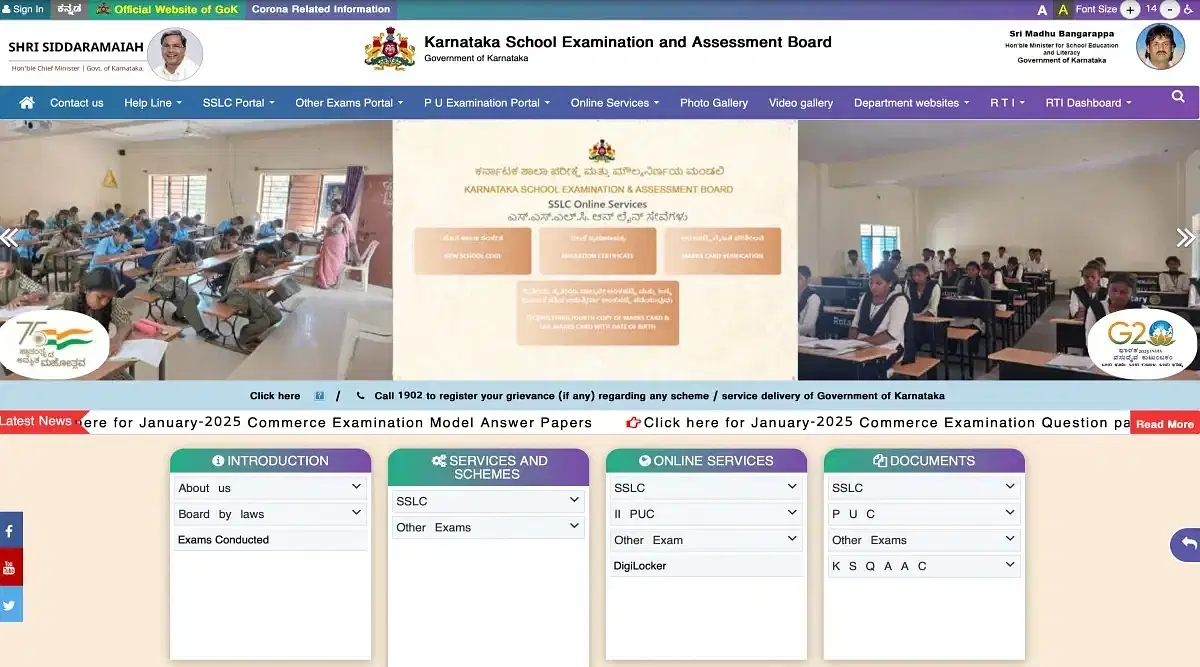Students who want to compare NIRF vs NAAC must first know that NIRF gives ranks to institutions and universities. In contrast, NAAC assesses and accredits the quality of education in higher educational institutions.
Table of Contents
The comparison between NIRF vs NAAC can be based on the function of each government institution. NIRF stands for National Institutional Ranking Framework, which ranks institutions and universities based on Teaching, Learning and Resources, Research and Professional Practices, Graduation Outcomes, Outreach and Inclusivity, and Perception.
On the other hand, NAAC Stands for National Assessment and Accreditation Council ensures the quality of education in Higher Education Institutions.
Difference between NIRF and NAAC
Comparison of NIRF and NAAC has been listed in the table given below:
| NAAC | NIRF |
|
NAAC does assessment and provides accreditation to higher educational Institutions and Universities. |
NIRF provides rankings to higher educational Institutions and Universities. |
|
NAAC uses a Qualitative method for evaluation. |
NIRF uses quantitative methodologies for evaluation. |
|
Accreditation is provided for five years. |
The rank provided by NIRF is valid for one year. |
|
Assessment and Accreditation is conducted through internal and external evaluation. |
An institution is ranked after the data received is verified by NIRF. |
|
The evaluation is done based on seven criteria. |
There are five parameters on which ranking is done. |
NIRF and NAAC Rankings
Students who want to know more about NIRF vs NAAC must know the parameters of NIRF and NAAC rankings. The parameters set by NIRF and NAAC play a crucial role in determining the ranking of institutions.
NIRF Ranking Parameters
The NIRF Ranking parameters are listed below:
- Teaching, Learning & Resources (TLR) - These parameters are related to the core activities of any place of learning.
- Research and Professional Practice (RP) - The scholarship is closely associated with excellence in teaching and learning.
- Graduation Outcomes (GO) - This parameter forms the ultimate test of the core teaching/learning effectiveness.
- Outreach and Inclusivity (OI) - The Ranking framework lays particular emphasis on the representation of women.
- Peer Perception - The ranking methodology is essential to the institution's perception.
Weightage of Ranking Parameters
The institutions are ranked based on their overall scores.
| S.No. | Parameters | Marks |
| 1. | Teaching, Learning & Resources (TLR) Ranking weight: 0.30 | 100 |
|
||
| 2. | Research and Professional Practice (RP) Ranking weight: 0.30 | 100 |
|
||
| 3. | Graduation Outcomes (GO) Ranking weight: 0.20 | 100 |
|
||
| 4. | Outreach and Inclusivity (OI) Ranking weight: 0.10 | 100 |
|
||
| 5. | Perception (PR) Ranking weight: 0.10 | 100 |
|
NAAC Criteria
Students can check out the NAAC parameters, criteria and weightage to understand the assessment done by NAAC. The seven criteria for evaluating an institution are:
- Curricular Aspects
- Teaching, Learning, and Evaluation
- Research, Innovation, and Extensions
- Infrastructure and Learning Resources
- Student Support and Progression
- Governance, Leadership, and Management
- Institutional Values & Best Practices.
NAAC has categorised Higher Educational Institutions into three main types:
- University
- Autonomous College
- Affiliated/Constituent College
NAAC Criteria-Wise Weightage
NAAC has assigned different weights to these seven criteria under various aspects based on the functioning and organisational focus of these three types of HEIs. Criteria Wise weightage given to three types of High Educational Institutions has been stated in the table below:
| NAAC Criteria | NAAC Weightages | |||
| Curricular Aspects | 150 (U) | 150 (AU) | 100 (Aff UG) | 100 (Aff PG) |
| Teaching-learning & Evaluation | 200 (U) | 300 (AU) | 350 (Aff UG) | 350 (Aff PG) |
| Research, Innovations & Extension | 250 (U) | 150 (AU) | 110 (Aff UG) | 120 (Aff PG) |
| Infrastructure & Learning Resources | 100 (U) | 100 (AU) | 100 (Aff UG) | 100 (Aff PG) |
| Student Support & Progression | 100 (U) | 100 (AU) | 140 (Aff UG) | 130 (Aff PG) |
| Governance, Leadership & Management | 100 (U) | 100 (AU) | 100 (Aff UG) | 100 (Aff PG) |
| Institutional Values & Best Practices | 100 (U) | 100 (AU) | 100 (Aff UG) | 100 (Aff PG) |
NAAC Grading System
The NAAC Grading System for each institution is dependent on seven key aspects. Each key aspect is graded under four types of categories:
- A (Very Good level)
- B (Good level)
- C (Satisfactory level)
- D (Unsatisfactory level)
The total score of all aspects is given appropriate weightage. The GPA is calculated, after which the cumulative GPA is derived from the seven GPAs related to seven criteria after applying prescribed weightage to every criterion. The table below shows the ranges of Institutional Cumulative Grade Point Average (CGPA):
| Ranges of Institutional Cumulative Grade Point Average (CGPA) | Letter Grade | Status |
| 3.51 - 4.00 | A++ | Accredited |
| 3.26 - 3.50 | A+ | Accredited |
| 3.01 - 3.25 | A | Accredited |
| 2.76 - 3.00 | B++ | Accredited |
| 2.51 - 2.75 | B+ | Accredited |
| 2.01 - 2.50 | B | Accredited |
| 1.51 - 2.00 | C | Accredited |
| <= 1.50 | D | Not accredited |
Roles of NIRF and NAAC
Understanding the roles of NIRF and NAAC requires students to get more information regarding each of these government bodies.
NAAC
The National Assessment and Accreditation Council (NAAC) assesses and gives accreditation to Higher education institutions. The evaluation is based on the Curricular Aspects, Teaching-Learning and Evaluation, Research, Consultancy and Extension, Infrastructure and Learning Resources, Student Support and Progression, Governance, Leadership and Management, and Innovations and Best Practices.
Function of NAAC
The National Assessment and Accreditation Council (NAAC) is an autonomous institution of the University Grants Commission (UGC). It functions through its General Council (GC) and Executive Committee (EC), composed of educational administrators, policymakers and senior academicians from various Indian higher education systems.
- It conducts assessment and accreditation of Higher Educational Institutions (HEI) to find the 'Quality Status' of the institution.
- Periodic assessment and accreditation of institutions of higher education.
- Stimulate the academic environment to promote the quality of teaching-learning and research in higher education institutions.
- Encourage self-evaluation, accountability, autonomy and innovations in higher education.
- Undertake quality-related research studies, consultancy and training programmes.
- Collaborate with other higher education stakeholders for quality evaluation, promotion and sustenance.
NIRF
The National Institutional Ranking Framework (NIRF) has been approved by the Ministry of Human Resource Development (MHRD). It ranks institutions across the country. The parameters determining an institution's rank are based on Teaching, Learning and Resources, Research and Professional Practices, Graduation Outcomes, Outreach and Inclusivity, and Perception.
Function of NIRF
The primary function of NIRF is to rank higher education institutions in India. The NIRF ranking framework aims to develop universities and colleges. Students who want to know about institutions can check the NIRF ranking to determine whether they wish to attend a particular institute. These qualitative parameters will help in making the country's education higher parameters.
NIRF and NAAC Accreditation
- The NIRF and NAAC accreditation plays an important role for students. It helps students understand the quality of education imparted by higher institutions.
- NAAC accreditation checks the quality of education imparted to higher education institutions nationwide. On the other hand, NIRF provides rankings to colleges and universities. It functions as an organisation that checks the institutions' performances through set parameters.
- Education plays an essential role in developing a nation. Accreditation provided by each of these government bodies helps institutions to stand apart and helps gain recognition.






















POST YOUR COMMENT